What is Gouache Paint?
The Origins and History of Gouache
How to use gouache paint? Gouache paint has a rich history dating back centuries. Its use started in Europe during the Renaissance. Artists wanted a medium that combined watercolor and opacity. Gouache was created by adding pigment and chalk to watercolor. This mix gave it better coverage and a matte finish. Early gouache was used for frescoes, illuminated manuscripts, and illustrations. Over time, designers and illustrators used gouache for posters and prints. Today, it’s popular among professional painters and hobbyists alike.
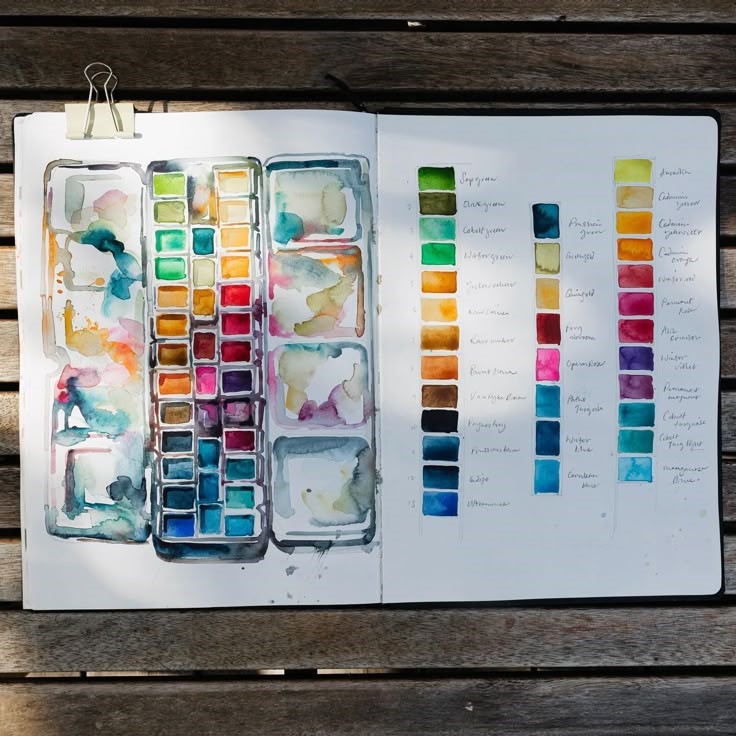
Key Characteristics of Gouache Paint
Gouache paint combines vibrant colors and unique versatility. It allows artists to create opaque and vivid effects. Gouache’s formula makes it more opaque than watercolor. You can also rewet it and continue working on dried gouache layers. It dries quickly to a smooth, matte finish, ideal for layering and detailed work. Artists can manipulate its water content for varied consistencies. It’s easy to control thanks to its forgiving nature. Gouache works well on many surfaces like paper, cardboard, and wood, making it incredibly adaptable.
Essential Tools and Materials for Gouache Painting
To get started with gouache painting, you need specific tools and materials. Choosing the right ones ensures a smooth painting experience and better results.
Choosing the Right Brushes
Brushes play a crucial role in gouache painting. Select brushes that suit your style and needs. Round brushes are ideal for detailed work and thin lines. Flat brushes work well for bold strokes and covering large areas. Synthetic brushes are durable and water-resistant, making them perfect for gouache. Ensure the brushes have soft bristles to maintain smooth paint application. It’s also good to have a variety of brush sizes for versatility.
Types of Gouache Paints
Different brands of gouache paints offer varying quality and features. Student-grade gouache is cost-effective and great for beginners. Professional-grade gouache offers richer pigments and smoother application. Some gouache paints come in tubes, while others are in pans. Tubes allow you to easily mix colors, while pans are compact and portable. Look for non-toxic and lightfast paints if you want long-lasting artwork.
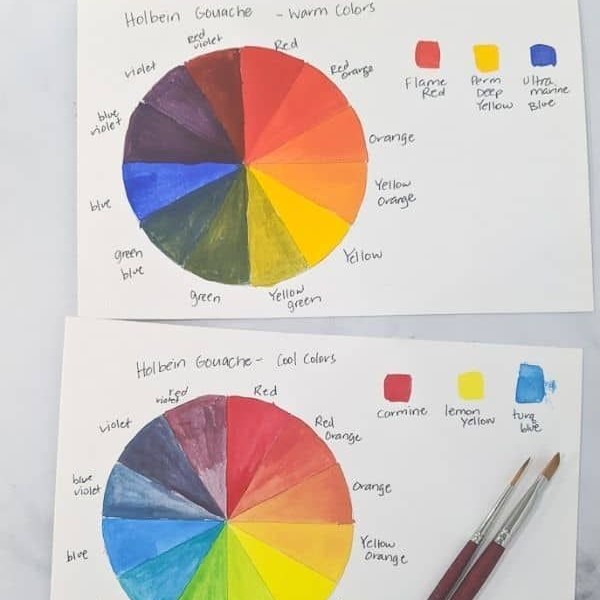
Recommended Surfaces for Gouache
The surface you choose affects how gouache behaves and looks. Thick and absorbent paper handles gouache well and prevents warping. Watercolor paper, especially cold-pressed or hot-pressed, is a popular choice. Cardboard and wood can also be used for unique textures and effects. Avoid slick or extremely textured surfaces; they may not hold gouache well. Always test your gouache on a surface before starting a final piece.
Preparing to Begin Your Gouache Painting
Starting with gouache painting requires preparation. A well-organized setup ensures a better painting experience. Follow these steps to get everything ready before you begin.
Setting Up Your Workspace
Create a clean and comfortable workspace. Choose a well-lit area with natural or bright light. Use a sturdy table to keep your tools and materials in place. Lay down a protective sheet to prevent paint stains on your surface. Organize your brushes, paints, and palette for easy access. Keep a container of clean water for rinsing brushes nearby. Have some paper towels or a cloth ready to blot excess water.
How to Mix Gouache Paints
Mixing gouache paints is simple but requires attention. Use a palette to blend colors effectively. Start by squeezing a small amount of paint onto the palette. Add a drop or two of water to adjust the consistency. Use a palette knife or brush to mix the paint. Combine colors gradually to achieve your desired shade. Test the mixed paint on scrap paper before applying it to your artwork. Always clean your palette and tools to avoid dried paint buildup.
Adjusting Paint Consistency with Water
Gouache paint’s consistency determines its appearance on the surface. Use water to adjust it as needed. For thicker layers, use minimal water for a creamy texture. For transparent effects, add more water for a thinner consistency. Always mix water gradually to avoid over-thinning the paint. Use a test surface to check the consistency before painting. Adjusting the paint ensures smooth layering and control in your artwork.
Techniques for Using Gouache Effectively
How to use gouache paint? Mastering gouache techniques unlocks its full potential. These methods enhance results and expand creative possibilities.
Layering and Opacity Control
Layering gouache correctly can add depth and dimension to your artwork. Start with light layers first. Gradually add darker colors to build detail and contrast. Fully dry each layer before applying a new one. This prevents muddy or uneven textures. Gouache’s opaque nature lets you cover mistakes effortlessly. Experiment with opacity by diluting paint for semi-transparent effects. Use thicker, undiluted paint for bold and vibrant coverage.
Creating Smooth Gradients
Smooth gradients make transitions between colors seamless. Begin by choosing colors that blend well. Start with one color and gradually add water for lighter tones. Overlap strokes with the second color, blending while still wet. Adjust paint consistency with water for smoother transitions. Use a clean, damp brush to soften hard edges. Practice gradient techniques on scrap paper to refine your skills.
Experimenting with Textures
Gouache shines in creating diverse textures. Use different brushes for varied effects. Try stiff brushes for rough textures or soft ones for smooth finishes. Dry brush technique adds a gritty, raw feel. Sponge or palette knives create unique patterns. Add water sparingly to control texture density. Layer gouache on textured surfaces like wood or cardboard for added depth. Each texture adds character and uniqueness to your painting.
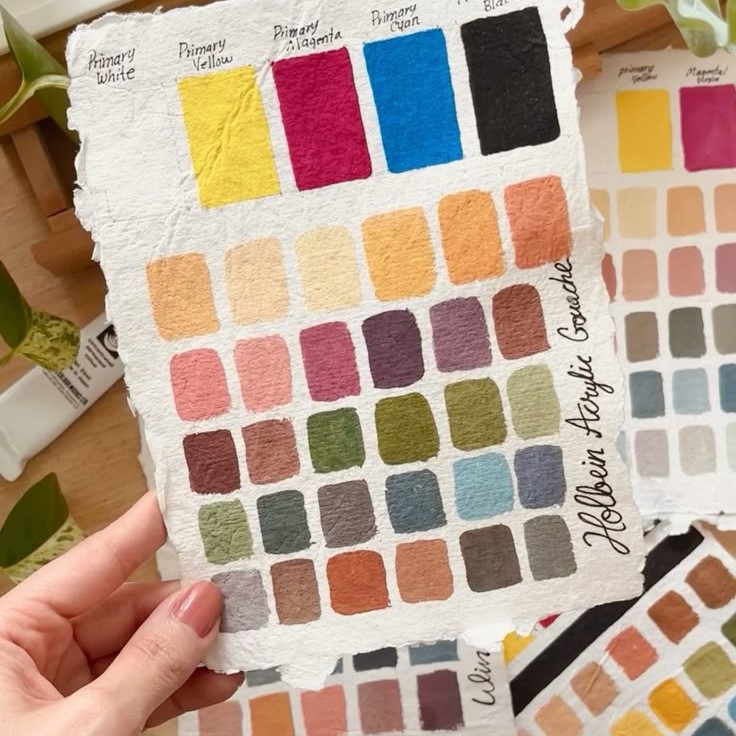
Common Mistakes and How to Avoid Them
Even experienced artists can make mistakes with gouache painting. Identifying and correcting these errors will help you improve your skills and create better artwork.
Overloading Water in Gouache Paints
Using too much water in gouache paint can cause several issues. Overloading water makes the paint too thin. Thin paint reduces opacity and diminishes vibrant colors. It can also lead to uneven application on the surface. Too much water can weaken paper, causing buckling or tearing.
To avoid this mistake, add water gradually while mixing paint. Test the consistency on scrap paper before painting. Aim for creamy, smooth paint to balance vibrancy and control. Use sturdy, thick paper to handle slight moisture without damage. Practice mixing gouache to gain confidence and consistency in your technique.
Managing Paint Drying Times
Gouache dries quickly, but this can create challenges. Rushing additional layers before drying can result in muddy colors. If not managed, fast drying may cause cracks or uneven finishes. Wet layers can smudge easily if touched or painted over.
To avoid these mistakes, let each layer dry completely before adding more paint. Work on multiple areas of the artwork to save time. Use a hairdryer or fan to speed up drying if necessary. Experiment with drying times during practice sessions to understand the process better. Proper layering ensures clean, crisp textures and avoids smudging.
Caring for and Preserving Your Gouache Artwork
How to use gouache paint? Keeping your gouache artwork intact requires proper care and preservation techniques. These steps ensure longevity and vibrant colors.
Sealing Gouache Paintings
Sealing gouache artwork protects it from moisture, dust, and damage. Gouache is water-soluble even when dry, so sealing is crucial, especially for artwork handled frequently.
- Use a Fixative Spray: Apply a clear, matte fixative designed for water-based paints. Ensure your painting is dry before sealing.
- Work in Ventilated Areas: Spray fixative evenly in an outdoor or ventilated space. Keep the spray a foot away.
- Apply Multiple Light Layers: Avoid heavy spraying. Use several thin coats for balanced protection without altering the artwork.
- Test First: Always test the fixative on scrap paper to check compatibility with gouache paint.
Sealing enhances durability while maintaining the artwork’s original appearance without cracking or discoloring.
Proper Storage Tips
Correct storage prevents fading, smudging, or physical damage to your gouache painting.
- Keep Away from Moisture: Store your artwork in a dry environment to avoid humidity and water exposure.
- Use Acid-Free Materials: Place gouache paintings in acid-free folders or storage boxes to prevent chemical reactions.
- Flat Storage: Store finished pieces flat to avoid warping or bending. Use protective sheets between artworks.
- Avoid Direct Sunlight: Sunlight can fade pigments over time. Store paintings in shaded areas.
- Frame Bigger Pieces: For larger paintings, frame them under glass with UV protection for extra safety.
By following these steps, your gouache artwork can remain vibrant and intact for years to come.
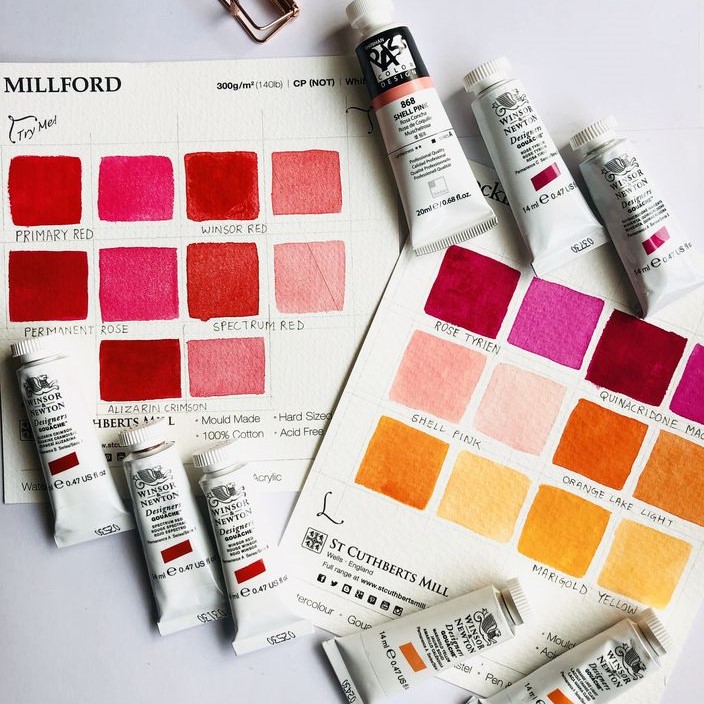
Gouache Painting Inspiration and Project Ideas
How to use gouache paint? Exploring project ideas inspires creativity and improves painting skills. Start with simple concepts and progress gradually.
Beginner-Friendly Project Ideas
If you’re new to gouache painting, start with easy-to-follow projects. These ideas build confidence:
- Simple Fruit or Vegetables: Paint basic shapes like apples, oranges, or bananas. Focus on blending and textures.
- Sunset Skies: Practice gradients using warm colors to create relaxing evening scenes.
- Abstract Patterns: Experiment with bright colors and playful strokes while learning how gouache behaves.
- Cute Animals: Try simple outlines of animals like cats, fish, or birds. Add small details as you progress.
- Greeting Cards: Make personalized cards using florals, leaves, or minimalist designs.
These projects allow you to practice layering, opacity, and color mixing.
Advanced Techniques for Creativity
Once you’re comfortable with basics, explore challenging projects and techniques:
- Portraits: Test your skills in blending skin tones and capturing facial details.
- Layered Landscapes: Paint multiple elements like mountains, forests, and reflections for depth and dimension.
- Cityscapes: Focus on fine details like windows, streets, and lights for urban scenes.
- Unique Textures: Use palette knives, sponges, or textured surfaces to add intricate effects.
- Mixed Media Art: Combine gouache with ink, pencil, or collage elements for innovative results.
Push your boundaries with complex compositions and creative techniques. Applying advanced skills can lead to stunning artwork.
Conclusion: Embrace the Beauty of Gouache Painting
Learning how to use gouache paint opens up a world of creative possibilities. With its vibrant colors and versatility, gouache equips artists with unique tools to express their visions. By mastering techniques, organizing your workspace, and avoiding common mistakes, you can develop your skills and create stunning artwork.
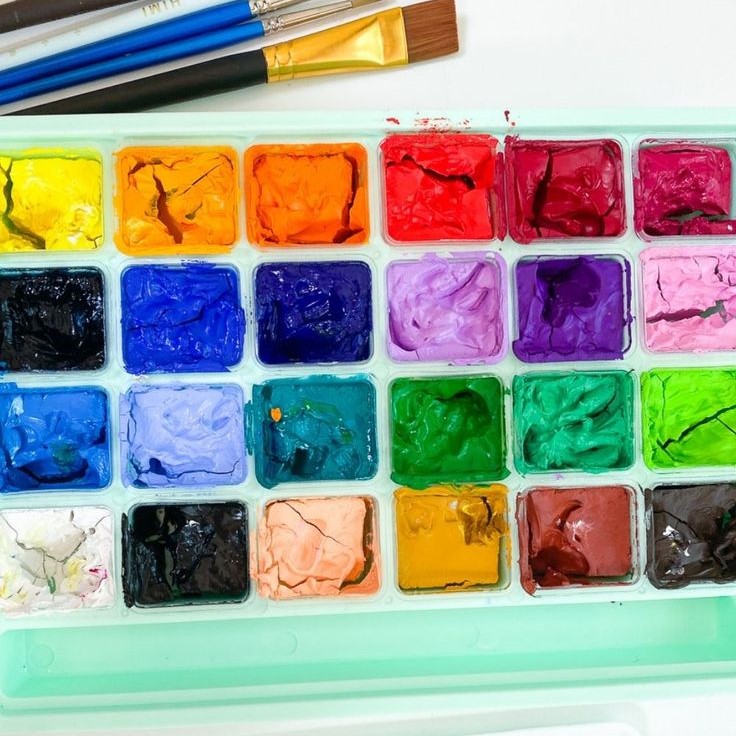
As you explore the versatility of gouache, remember that practice is key. With time and dedication, you can enhance your expertise and enjoy the beautiful and expressive medium of gouache painting.